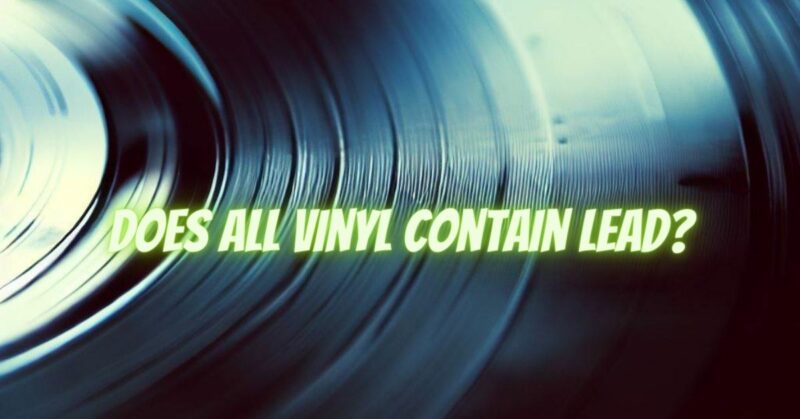Vinyl records have long been a beloved medium for music enthusiasts, but concerns regarding the presence of lead in vinyl have occasionally arisen. In this article, we aim to clarify the topic and address the question of whether all vinyl records contain lead. By understanding the manufacturing process and regulatory standards, we can gain a clearer perspective on the issue.
- Vinyl Composition and Additives:
Vinyl records are predominantly made from polyvinyl chloride (PVC), a type of plastic. During the manufacturing process, certain additives and stabilizers may be used to enhance the record’s durability, flexibility, and performance. Historically, lead-based additives, such as lead salts, were occasionally utilized in vinyl production. However, regulatory changes in the late 1970s and early 1980s led to significant reductions in the use of lead-based additives in vinyl manufacturing.
- Regulatory Standards:
Recognizing the potential health risks associated with lead exposure, regulatory bodies, such as the Consumer Product Safety Commission (CPSC) in the United States, have established strict limits on lead content in consumer products. These standards ensure that vinyl records and other vinyl products comply with safety guidelines. Manufacturers are required to adhere to these regulations, and independent testing is conducted to ensure compliance.
- Contemporary Vinyl Records:
Vinyl records produced in recent decades, following the regulatory changes, generally contain very low or negligible levels of lead. Manufacturers have shifted to alternative additives and stabilizers that meet safety standards while maintaining the desired properties of vinyl records. However, it is important to note that vinyl products from earlier eras may have higher lead content due to the manufacturing practices of that time.
- Consumer Safety and Handling:
From a consumer standpoint, the potential health risks associated with vinyl records containing low levels of lead are minimal. Direct contact with the vinyl surface is limited during normal handling and listening. However, it is still advisable to practice good hygiene by washing hands after handling records, particularly before consuming food or beverages.
Conclusion:
While some vinyl records produced in the past may have contained lead-based additives, contemporary vinyl records adhere to strict regulatory standards that limit or eliminate lead content. The shift in manufacturing practices and the implementation of safety guidelines have significantly reduced the presence of lead in vinyl records. As a result, the health risks associated with lead exposure from vinyl records are generally considered to be minimal. By understanding the manufacturing process, regulatory standards, and practicing proper hygiene, vinyl enthusiasts can enjoy their collections with confidence, knowing that contemporary vinyl records are designed to meet rigorous safety requirements.


